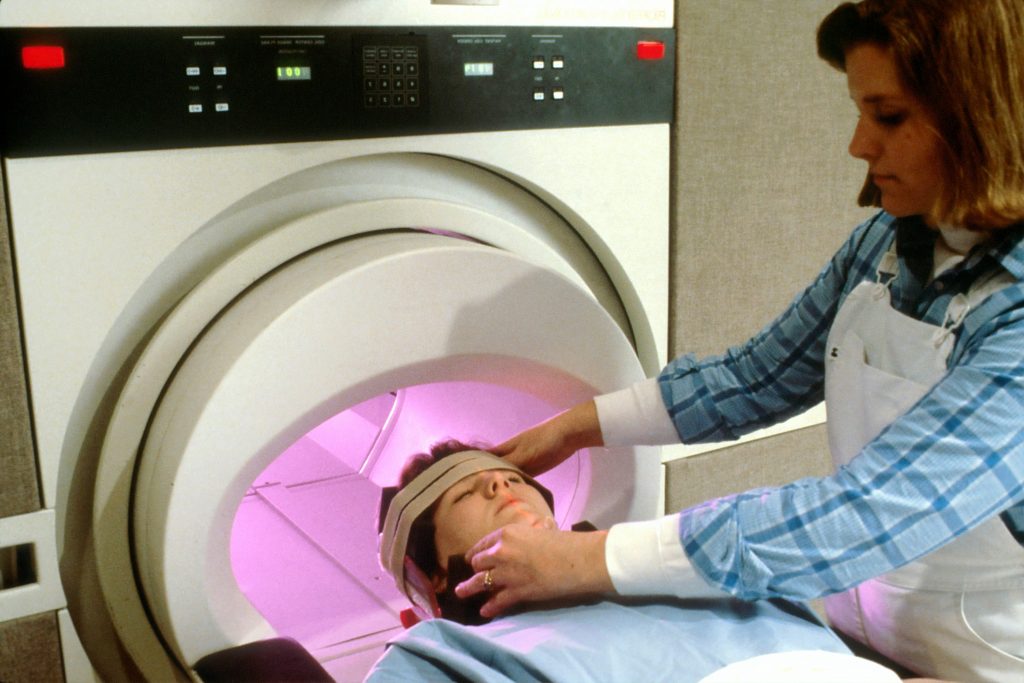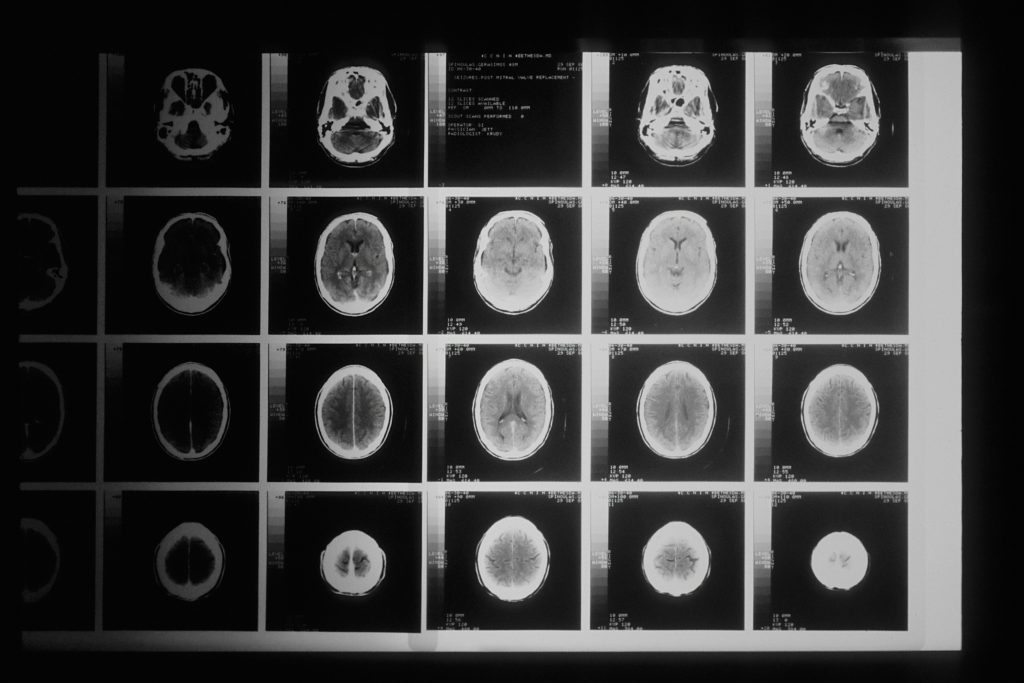Bipolar disorder (BD) is a serious mental illness with significant hereditary components and predominantly affecting younger populations (O’Connell et al., 2022). Currently, diagnosis is primarily done via clinical interview. However, diagnosing BD, especially in adolescents, is challenging due to the ambiguity of subthreshold symptoms, as discussed in previous blogs: Is it bipolar disorder or borderline personality disorder? and Improving diagnosis of bipolar disorder.
This leads to long gaps between first symptoms and formal diagnosis, which for many people can be many years, thereby greatly delaying the start of treatment and care. The duration of untreated bipolar disorder is known to have a strong negative impact on long-term outcomes, notably with high risk of suicidality (Di Salvo et al., 2023).
While magnetic resonance imaging (MRI) is not standardly used for diagnosis, researchers use imaging to explore the effects of bipolar disorder on the brain (Strakowski et al., 2005). However, traditional research relied primarily on single-modality MRI, which may not fully capture the complex interplay of genetic and environmental factors influencing BD (Waller et al., 2021). New approaches that harness imaging technologies, including multimodal MRIs mixed with machine learning (ML) (Campos-Ugaz et al., 2023), have the potential to reduce the diagnostic gap and lead to earlier interventions.
In the current study, Wu and colleagues aimed to improve bipolar disorder diagnostic accuracy by integrating multimodal MRI data with behavioural measures. Using ML techniques, the authors developed and evaluated three diagnostic models across neuropsychiatric groups, including offspring of BD patients with (OBDs) and without subthreshold symptoms (OBDns), non-BD offspring with subthreshold symptoms (nOBDs), BD patients, and healthy controls (HC). The overall aim of this study was to enhance early identification and intervention strategies by combining traditional clinical metrics with advanced neuroimaging and ML approaches.

Wu and colleagues (2024) developed three multinomial bipolar disorder classification models: a clinical diagnosis model using behavioural variables, a data-driven model focusing on MRI-features and a comprehensive model integrating behaviour and anatomical and functional features.
Methods
Two datasets were used in this study: a primary dataset for model construction and validation, sourced from the Recognition and Early Intervention of Prodromal Bipolar Disorders initiative (Lin et al., 2015), consisting of 309 participants (excluding patients over 20 years old) and an age-matched independent external validation dataset from Nanjing Brain Hospital, comprising 40 BD patients and 34 healthy controls. To collect behavioural measures, participants underwent systematic clinical evaluations using various scales to assess symptoms like anxiety, depression, mania, and psychotic symptoms. Familial history was validated, and global functionality was assessed.
Three types of MRI data modalities were acquired using a 3.0 Tesla scanner: T1-weighted images, diffusions tensor imaging (DTI), and resting-state functional MRI. The brain was divided into 400 different areas using the Schaefer 400 parcellation. Structural measures (volume, thickness, surface area), structural connectivity (fractional anisotropy, mean diffusivity) and functional connectivity measures were computed for each brain area. Standard pre-processing steps, including correcting for motion in the scanner, denoising, and normalizing the data were followed.
Three classification models were built: a clinical diagnosis model focussing on behavioural attributes; an MRI-based model focussing on morphometric and functional and structural connectivity measures; and a comprehensive model integrating imaging and behavioural features. The models classified the subjects into five groups (OBDs, OBDns, nOBDS, BD, HC), divided into a training and a testing set, with an 80:20 ratio.
Results
The five groups were similar in age, education, and gender distribution. However, significant differences were observed in clinical measures and global functioning. Parental history of psychiatric conditions, especially bipolar disorder, also varied significantly, particularly among offspring of individuals with BD.
Overall, 6006 MRI-derived metrics and 16 behavioural variables were used for the classification analysis. The three models were used for multinomial classification and to identify crucial features.
- Clinical diagnosis model: This model used only behavioural variables (scales assessing anxiety, depression, mania, psychotic symptoms and global functioning) and family history to classify the participants. It achieved a training accuracy of 0.78 and a test accuracy of 0.75, with an overall predictive accuracy of 0.75 (ranging from 0.62 to 0.85). The model’s discriminative ability between the groups was strong.
- MRI-based model: This model used only MRI metrics (morphometric and graph measures) to assess the unique predictive power of anatomical and network features. It reached a training accuracy of 0.63 and a predictive accuracy of 0.65 (ranging from 0.52 to 0.77). The discriminative ability was also notable, especially for BD and HC groups, though slightly lower than the clinical model.
- Comprehensive model: Finally, this model integrated both MRI and behavioural features, yielding the highest performance with a training accuracy of 0.83 and an overall accuracy of 0.83 (ranging from 0.72 to 0.92). The model showed superior discriminative ability across all groups. The comprehensive model was validated using an independent external dataset to distinguish BD patients from HC, achieving high accuracy (89.19%). Sensitivity and specificity metrics were also high, confirming the model’s robustness in distinguishing BD from HC.
The comprehensive model was found to be the most reliable, as confirmed by systematic cross-validation. It significantly outperformed the MRI-based and clinical models. In terms of feature importance, both behavioural and MRI-derived metrics were crucial for accurate classification. Key discriminative features included parental BD history, and global function (via Global Assessment Scale). Several morphometric and connectivity measures, including specific brain regions volumes and mean diffusivity were also important. A structural equation model further explored the relationships among psychiatric symptoms, brain health derived from 20 MRI metrics, clinical diagnosis, and parental BD history. The model demonstrated a moderate to acceptable fit, highlighting the complex interplay between these factors.

Using MRI-based metrics and behavioural measures, Wu and colleagues demonstrated the accuracy of using a comprehensive model to classify bipolar disorder patients, offspring, and healthy controls.
Conclusions
In conclusion, Wu and colleagues demonstrated the efficacy of integrating multimodal MRI metrics with behavioural assessment measures to achieve greater diagnostic accuracy of bipolar disorder in adolescents.
Future exploration of incorporating advance imaging into clinical practice are needed to assess the implication for improving patient outcomes in psychiatry.

Wu and colleague encourage further exploration into incorporating advanced imaging into clinical practice in psychiatry to improve patient outcomes.
Strengths and limitations
Several strengths and limitations of this study are of note. First, combining behavioural assessments, including parental history of mental illness, with MRI metrics offers a holistic view of neuropsychiatric conditions, which allows for detection of brain abnormalities that would go unnoticed through behavioural data alone. Moreover, by focusing on the diagnostic process in a real-world setting, Wu and colleagues address the practical challenges of diagnosing bipolar disorder in adolescents and hinting at the potential utility of MRI for clinical practice.
Furthermore, in addition to emphasizing the role of familial history of mental illness and global functioning, the study highlights specific brain regions and behavioural measures that are particularly discriminative in the diagnosis of bipolar disorder, highlighting parameters that should be carefully monitored. Lastly, by testing the models on an external dataset, the authors made efforts to improve the generalizability of the findings, which supports the potential adoption of this approach in broader clinical practice.
However, a few limitations need to be mentioned. First, the sample size within each group was relatively small, which limits the generalizability of the findings and the statistical power of the models. A larger sample size would enhance the robustness and reliability of the findings. In addition, due to the complexity of adolescent development and the cohort in the study being derived from a specific population, the sample in this study may not represent the full diversity of adolescence, limiting applicability across different ethnic, socio-economic and environmental backgrounds.
Importantly, the study is retrospective, which may introduce selection bias and it relied on the fundamental assumption that the initial clinical diagnoses were accurate. A prospective long-term longitudinal study would determine the accuracy of the models to predict future outcomes and the potential utility of this tool in routine clinical practice.

The study emphasizes the role of familial history of mental illnesses and global functioning for the diagnosis of bipolar disorder in adolescents.
Implications for practice
Overall, the paper offers a promising framework for integrating MRI metrics and behavioural data to improve BD diagnosis in adolescents. However, limitations related to sample size, generalizability, and diagnostic assumptions highlight areas where future research could expand and refine the approach. The findings from this study have several implications for practice:
Improved early diagnosis and personalised interventions
- The integration of MRI metrics with behavioural assessments might have the potential to enable earlier and more accurate diagnoses of bipolar disorder in adolescents, particularly for those with a high genetic risk, by reducing ambiguity between overlapping symptoms, and to tailor treatment plans based on an individual’s neuroimaging profile and behavioural history.
- This could lead to earlier interventions, potentially mitigating the severity or progression of the disorder and improving long-term outcomes.
Enhanced risk stratification
- For adolescents with subthreshold symptoms, this multimodal approach may improve clinicians’ ability to stratify risk.
- Behavioural data, including psychiatric familial history and functioning levels, combined with MRI data, may help identify those at higher risk for developing BD, even before clear neuroimaging abnormalities manifest.
Incorporation into clinical workflows
- The success of integrating MRI and behavioural data could lead to the routine use of neuroimaging in clinical practice, particularly for difficult-to-diagnose cases.
- This may increase reliance on MRI technologies as a diagnostic tool in mental health settings, though cost and accessibility considerations must be addressed.
Potential for broader use of multimodal models
- The demonstrated efficacy of this approach for BD may encourage similar multimodal diagnostic models for other neuropsychiatric conditions, such as schizophrenia, major depressive disorder, or anxiety disorders.
- Expanding this model could improve diagnostic precision across a range of mental health conditions.
While MRI could prove useful in clinical practice, a few considerations for implementation should be considered. First, incorporating MRI into routine diagnostic practice will require investments in technology, staff training, and reimbursement models, as MRI is costly and not universally accessible. In addition, clinicians may require additional training to interpret neuroimaging data alongside behavioural assessments, as well as to understand the implications of integrating such findings into diagnosis and treatment.
It is also important to note that while MRI technology has been used for decades for research and in some clinical frameworks, undergoing a scan is not a trivial experience and can lead to discomfort or distress in some cases. Thus, it may not be recommended for some populations. Finally, although in this study, MRI improves diagnostic precision, it will be important for healthcare systems to weigh the significant cost of neuroimaging against its benefits, especially in resource-limited settings and its use might, for example, be limited to high-risk individuals.
Overall, utilising MRI data and behavioural measures for the diagnosis of bipolar disorders in adolescents has the potential to improve diagnosis and long-term outcomes of patients and at-risk individuals, although some serious considerations for clinical implementations must be examined.

The study emphasises the potential of adopting a multimodal approach, incorporating imaging and behavioural data, to improve diagnosis of bipolar disorder in adolescence.
Statement of interests
No conflict of interests to declare.
Links
Primary paper
Wu J., Lin K., Lu W., Zou W., Li X., Tan Y., Yang J., Zheng D., Liu X., Lam B.Y.-H., Xu G., Wang K., McIntyre R.S., Wang F., So K.-F. & Wang J. Enhancing Early Diagnosis of Bipolar Disorder in Adolescents through Multimodal Neuroimaging Biological Psychiatry (2024), doi: https://doi.org/10.1016/j.biopsych.2024.07.018
Other references
Campos-Ugaz WA, Palacios Garay JP, Rivera-Lozada O, Alarcón Diaz MA, Fuster-Guillén D, Tejada Arana AA. An Overview of Bipolar Disorder Diagnosis Using Machine Learning Approaches: Clinical Opportunities and Challenges. Iran J Psychiatry 18(2):237-247 (2023). https://doi.org/10.18502/ijps.v18i2.12372
Di Salvo, G., Porceddu, G., Albert, U. et al. Correlates of long duration of untreated illness (DUI) in patients with bipolar disorder: results of an observational study. Ann Gen Psychiatry 22, 12 (2023). https://doi.org/10.1186/s12991-023-00442-5
Lin, K., Xu, G., Wong, N. M. L., Wu, H., Li, T., Lu, W., . . . Lee, T. M. C. A Multi-Dimensional and Integrative Approach to Examining the High-Risk and Ultra-High-Risk Stages of Bipolar Disorder. eBioMedicine, 2(8), 919-928 (2015). https://doi.org/10.1016/j.ebiom.2015.06.027
O’Connell, K. S., Smeland, O. B., & Andreassen, O. A. Chapter 3 – Genetics of bipolar disorder. In E. E. Tsermpini, M. Alda, & G. P. Patrinos (Eds.), Psychiatric Genomics (pp. 43-61): Academic Press (2022). https://doi.org/10.1016/B978-0-12-819602-1.00003-6
Strakowski, S., DelBello, M. & Adler, C. The functional neuroanatomy of bipolar disorder: a review of neuroimaging findings. Mol Psychiatry 10, 105–116 (2005). https://doi.org/10.1038/sj.mp.4001585
Waller, J., Miao, T., Ikedionwu, I. et al. Reviewing applications of structural and functional MRI for bipolar disorder. Jpn J Radiol 39, 414–423 (2021). https://doi.org/10.1007/s11604-020-01074-5







